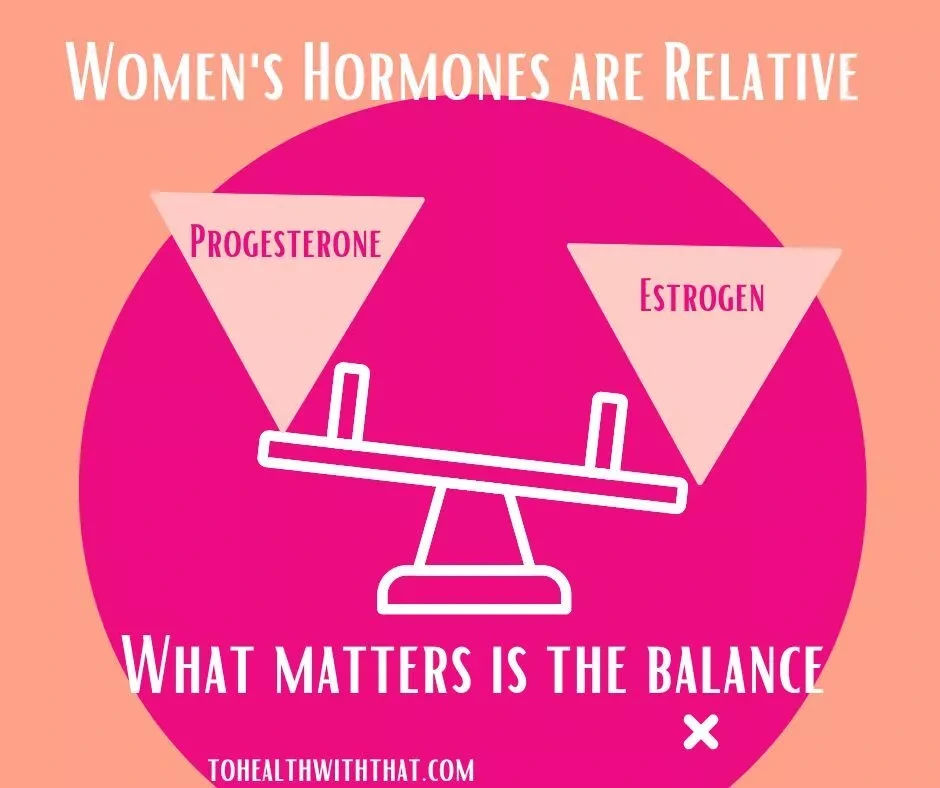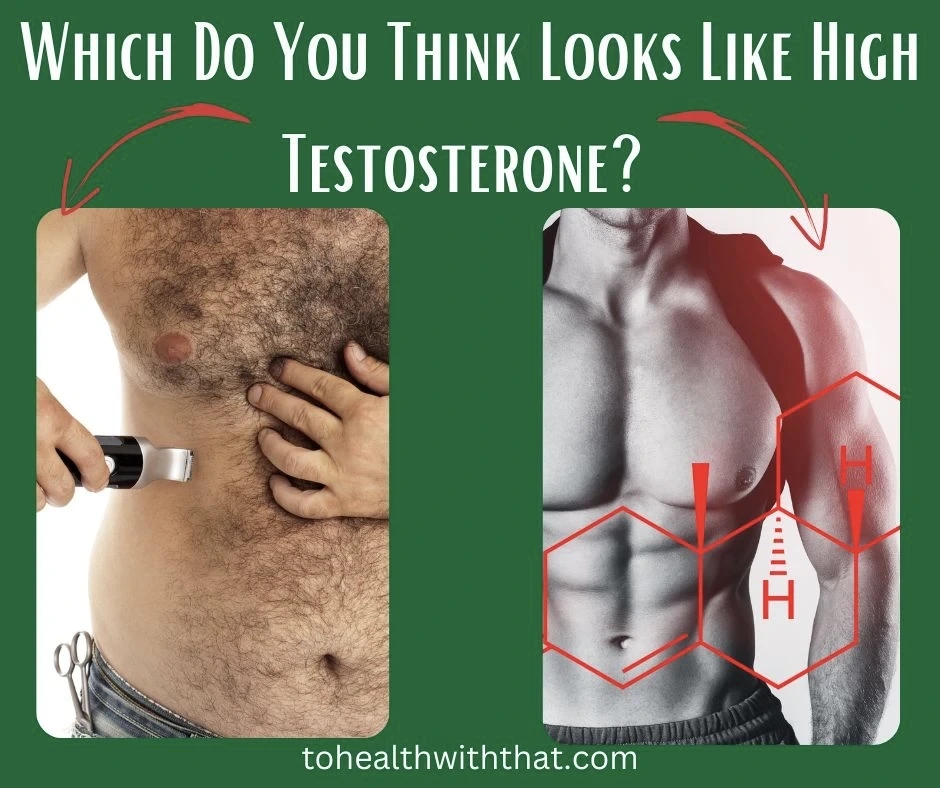Female hormones are nothing if not complicated (as anyone who has ever met a woman can affirm). First – a conversation about the relativity of hormones, vs. their absolute levels. I feel the relative levels of hormones – in both women and men – matters *almost* more than the absolute levels of each hormone *This is true within limits. This goes out the window if one hormone is really grossly high or low, but for the average person, it applies. Picture this like a teeter totter – estrogen and progesterone levels are more important in terms of how they balance each other than how absolutely high or low they are.

Estrogen and progesterone induce functional changes in the endometrium to prepare for implantation and the establishment of pregnancy
- Estrogen – classically what we think of as the female sex hormones. This is a group of related hormones that contribue to female sexual development. Most is from the ovaries, but some comes from the adrenals – especially after menopause, and, shockingly, from your fat cells. Estrogen from fat cells can interfere with hormone balance in both women and men. All estrogens are pro-growth. 3 main types:
- Estrone Estrone is a weaker acting estrogen, and the dominant form in post-menopausal women. It can be considered an estrogen repository because it is easily converted into more active forms.
- Estradiol This is by far the strongest estrogen – called the “Marilyn Monroe hormone” – shows the greatest correlation with female sexual characteristics like large breasts, low waist to hip ratio, and high fecundity. Interestingly, it is also called the Marilyn Monroe hormone because women with high estradiol are most likely to be serial monogamists who “trade up” repeatedly in relationships just like the icon herself did.
- Estriol Like estrone, this is considered a weak estrogen. levels of estriol are almost undetectable until pregnancy, and then estriol is produced by the placenta – during pregnancy the estriol levels increase 1000 fold. It starts to rise at week 8 of pregnancy and peaks before delivery. It is thought to help keep the uterus and placenta healthy and ready the body for healthy delivery and nursing.
Low Estrogen Symptoms:
- Hot flashes or night sweats
- Scanty, delayed or absent menses
- Trouble sleeping
- dryness/thinning of vaginal tissue (usually seen as pain with intercourse)
- Low sex drive
- Mood swings
- Dry skin
- Depression
- Migraine (especially menstrual migraine as a part of normal cycling)
- Osteoporosis/weakinging of bones
Causes of low estrogen:
- High performance athletics
- Low body weight
- Anorexia
- Menopause
- Full hysterectomy
- More rarely – pituitary causes
- COMT fast
High estrogen Symptoms (far more common)
- Weight gain – especially in the waist, hips, thighs
- Heavy bleeding, occasionally light or irregular bleeding
- PMS
- Acne
- Constipation
- Fibrocystic breasts
- Fibroids
- Fatigue
- Loss of sex drive
- Depression/anxiety
- Increased risk of hormone dependent cancers (breast, ovarian, endometrial, prostate, colon, bladder, cervix)
- In men – breast development, erectile dysfunction, infertility
Causes of High Estrogen:
- High ratio of fat tissue to lean body weight
- Genetic factors (COMT slow, MTHFR, PCOS and related genes)
- Stress (increases cortisol which depletes progesterone and lets estrogen run rampant)
- Increased alcohol consumption (raises estradiol and makes it more difficult to clear estrogens, plus decreases folate levels and so has a greater impact on women with MTHFR)
- Dysbiosis – some gut bacteria interfere with proper estrogen clearance
- Xenoestrogen exposure – BPA, phthalates,
- Insulin resistance
- Artificial estrogens (OCP, HRT)
Progesterone, Testosterone, FSH, and LH
Progesterone
Progesterone is primarily secreted from the corpus luteum, which is left behind on the ovary after the egg is released. It thickens the endometrium, or uterine lining, to prepare for a fertilized egg. Progesterone also inhibits ovulation so we don’t have a litter and inhibits the uterine contractions that would prevent implantation.
If conception doesn’t happen then the corpus luteum breaks down, progesterone drops, and uterine lining sheds – this would be your menstrual cycle. If conception does happen, then the corpus luteum continues to secrete progesterone and ultimately the placenta does as well so in early pregnancy we should see a sharp progesterone spike. Levels or progesterone remain elevated through the whole pregnancy. Low levels of progesterone can make it harder to conceive, make miscarriage more likely, and make pre-term delivery more likely.
Pituitary Hormones
FSH FSH, or follicle stimulating hormone, is secreted by the pituitary gland and works with LH to regulate menses. In those designated female at birth (DFAB), FHS is released steadily through the follicular phase of the cycle to help mature eggs, and then rises in a surge along with LH to trigger ovulation. Without normal FSH functioning the cycle cannot continue. In those designated male at birth (DMAB), FSH is integral to normal spermatogenesis.
LH LH, or lutenizing hormone, is secreted by the pituitary gland and works in concert with FSH to regulate the menstrual cycle. In those designated female at birth (DFAB), LH is released in a surge along with FSH at the end of the follicular phase, to trigger ovulation. After ovulation it is released steadily to help mature the corpus luteum and trigger it to release progesterone. In women around menopause, LH levels increase as levels of estrogen and progesterone decrease. In the pituitary gland of people designated male at birth (DMAB), LH is released constantly over time after the onset of puberty, to generate consistent testosterone release.
Testosterone
Testosterone is present in both women and men but men have far higher levels. Testosterone is typically thought of as the male sex hormone because it is responsible for male sexual development including growth of the penis and testes, facial and body hair, deepening of the voice, building muscles and strong bones, height, spermatogenesis and fertility.
Testosterone Imbalance – For Men or Women

High testosterone Symptoms in Men
This is actually pretty rare and usually caused by tumors of the adrenals or testes, steroid use, or genetic disorders such as Klinefelters syndrome.
- Acne
- Aggression
- Excess hair growth
- High blood pressure
- HIgh sex drive
- Infertiility or low sperm count
- Prostate enlargement
- Unexplained weight gain
High testosterone Symptoms in Women
Symptomatically, this looks much the same. The most common cause is PCOS, but there are also tumors of adrenals or ovaries.
- Acne
- Agression
- Excess face and body hair
- Infertility
- Irregular periods
- Low sex drive
- Abnormal weight gain
Low Testosterone Symptoms in Men
This is extremely common with an estimated 40% of men over 45 struggling with low testosterone. There are a wide variety of causes, but the most prominent are high estrogens from fat tissues and outside sources, as well as aging.
- Low sex drive
- Erectile dysfunction
- Fatigue
- Depressed mood
- Loss of muscular strength
Low Testosterone Symptoms in Women
This is extremely common after menopause and can look similar to low testosterone in men.
- Thinning hair
- Dry skin
- Low sex drive
- Low mood
- Decreasing muscle mass
Basic Fertility Workup
Basic fertility workup includes:
- Semen analysis (male partner)
- Bloodwork (female partner) including:
- Hormones – cycle day 3 estradiol and FSH
- Progesterone – cycle day 24 or 10 days after ovulation
- Anti mullerian hormone (AMH)
- Thyroid panel
- Imaging:
- HSG or hysterosalpingogram to ensure the tubes are open to allow an egg to pass through.
- Antral follicle count to see how many eggs are maturing that cycle
Please notice that in any basic fertility workup, genetics is not on the table, so if you’ve had a history of repeat miscarriages it is really important to also consider the MTHFR mutation and see if that could be affecting your chances.

This podcast breaks up BIG health topics, like MTHFR, into small, easy bites. All in ten minutes or less.
We’ll talk about why folic acid can be toxic, how the MTHFR enzyme is in bed with estrogen, why you want to turn genes off, and how folate and depression are linked. Season 3 features Dr. Kate Naumes, women’s health expert, to deep dive into hormones and infertility.
Check the show notes at tohealthwiththat.com for more info and downloadable. Have MTHFR? Join genetic rockstars now at community.tohealthwiththat.com and for more info about Dr. Kate go to naumesnd.com
Doing a good detox protocol takes some preparation and some of the best preparation you can do is finding out if your genes are making detoxification harder for you somewhere. Some gene SNPs have the potential to make detox harder by interfering with phase two conjugation reactions. These include MTHFR, MTR, MTRR, GST, GPX, COMT, HNMT, UGT1A1, SULT genes, NAT1, and NAT2.
With each category of gene SNP, I will also give suggestions for improving that aspect of your phase two detoxification reactions.
00:00 – Intro
00:49 – Why SNPs matter and how to test
02:08 – Genes that affect methylation and how to help
02:46 – Genes that affect glutathione and how to help
03:38 – Genes that affect sulfation and how to help
04:20 – Genes that affect glucuronidation and how to help
05:52 – Genetic Rockstars walkthrough
07:42 – Genes that affect acetylation and how to help
08:11 – Amino acid conjugation
GENETIC ROCKSTARS (an MTHFR community): community.tohealthwiththat.com
FREE COURSE: MTHFR Basics: https://to-health-with-that.teachable.com/p/mthfr-basics
WORK WITH DR. AMY ONE-ON-ONE: Set up a free meet and greet appointment to see if we’re a good fit to work together, or if group coaching, community, or something else might be a better option: https://calendly.com/amy-tohealthwiththat/15min
GROUP COACHING: https://www.tohealthwiththat.com/group-coaching/
WEBSITE: https://tohealthwiththat.com/
AFFILIATE LINKS:
I appreciate you using these links to purchase products you would buy anyway, because they allow me to keep putting information out there. Thank you!
SEEKING HEALTH (methylation and histamine support supplements – these ship internationally): https://bit.ly/3afXYH4
STRATEGENE REPORT (detailed genetics using 23andme or ancestry raw data): https://bit.ly/3retbm5
FULLSCRIPT (professional grade supplements): https://us.fullscript.com/welcome/thwt
QUEEN OF THE THRONE (castor oil and castor oil packs): https://shop.queenofthethrones.com/amy-tohealthwiththat use code AMY_TOHEALTHWITHTHAT10 for 10% off of any order of $59 or more
—
Send in a voice message: https://podcasters.spotify.com/pod/show/tohealthwiththat/message

MTHFR is a common genetic mutation that can contribute to anxiety, depression, fatigue, chronic pain, infertility, and more serious conditions like breast implant illness, heart attack, stroke, chronic fatigue syndrome, and some types of cancer. If you know or suspect you have an MTHFR variant, schedule a free 15-minute meet-and-greet appointment with MTHFR expert Dr. Amy today.
Book Your Appointment
